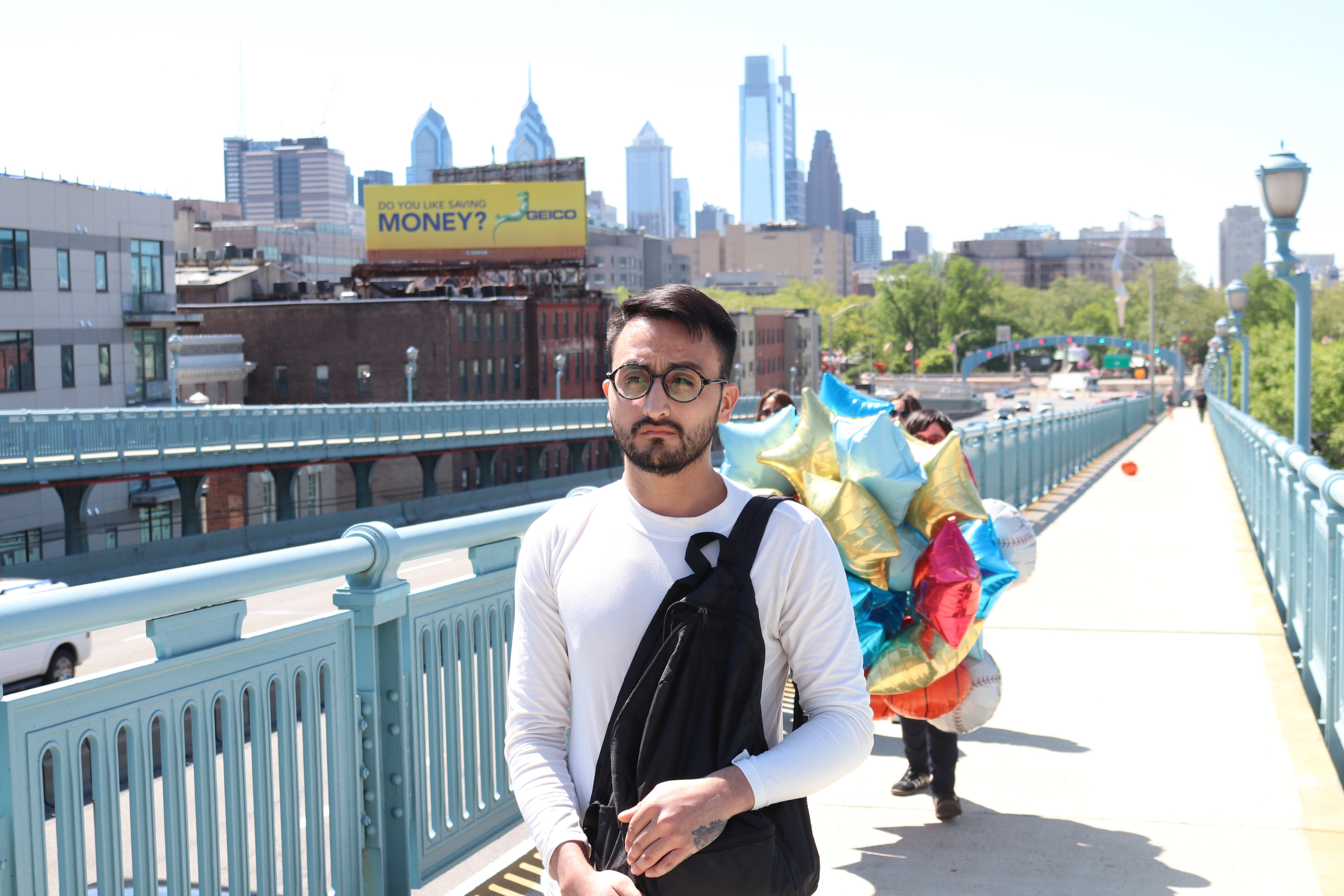
Cuerpos al Vacío: When Performance Art and Immigration Collide
Two Colombian performance artists fused their own immigrant experiences with those of migrant children to make a meaningful journey across the Ben Franklin…
It was a particularly windy Saturday afternoon when the journey from the Philadelphia bank of the Delaware River to Camden, NJ, began. In three months, Colombian artists Adrian Hueso and Salomé Cosmique planned a symbolic trek across the Ben Franklin Bridge they called “Cuerpos al Vacío.” The hour-and-a-half performance on April 27 highlighted the experiences of immigrants crossing the U.S. southern border. Their inspiration came from the children at the center of the chaos.
“We were shaken when we saw on the news all the children being captured and detained on the border,” said Hueso.
For Hueso and Cosmique, these children are reduced to a corporeal form as they follow their parents to the U.S.
“The bodies of the children are carried across the border without a choice,” said Hueso.
With physical form at the center of the performance, Cosmique and Hueso collected rocks from across the city to represent the individual migrant children and tied balloons to them to capture the migrant children’s innocence.
In slow, deliberate steps, the artists made the almost one mile trip across the Ben Franklin Bridge in silence. Hueso clutched a backpack full of rocks to his chest and Cosmique held an assortment of balloons over her head. Every couple of meters, the pair stopped to place a rock-anchored balloon on the ground to mark their journey across the Pennsylvania-New Jersey border. Many of the balloons were lost that day to the wind vortex above the Delaware River. It’s comparable to the many migrant children lost in detention centers along the border, separated from their families by an even more daunting bureaucratic vortex.


The Department of Homeland Security does not keep updated numbers on the amount of migrant children detained at the border, but The New York Times estimated there were about 15,000 in December of 2018. There have also been approximately 1,500 unaccounted for.
While the artists focused on the innocence of children, it’s a message immigrants of all ages can relate to.
Both artists also drew on their own experiences as immigrants for the performance. Other than Colombia and Philadelphia, Cosmique has also lived in France and Puerto Rico. In addition to being a performance artist, she also works as a translator for the School District of Philadelphia. It puts her in daily contact with children lost in their new American realities with no one—including their parents—to turn to for help.
RELATED CONTENT
“A lot of those I work with are from the countryside in their home countries and it’s a lot for them to come to a city and South Philadelphia,” said Cosmique.
For Hueso, he is four months into his first stint outside his home of Colombia. While the decision to come was his own, a large part of his experience has been using his physical self to bridge the language barrier.
“The body is a way to communicate,” said Hueso.
As artists, a performance is as physical as it gets. Its reception and subsequent impact is where the power lies. Hueso doesn’t think “Cuerpos al Vacio” has any transformative power in the moment, but what it forms in the aftermath could have an impact.
“Our role as artists is to generate questions and offer visibility to themes from another side,” said Hueso.
“Cuerpos al Vacío” was a peaceful demonstration of an experience that plays out daily on the U.S. southern border, but it’s one that a majority of Americans’ ancestors also experienced at some point in time to end up here today.
Cosmique said she loves to hear the different languages of Philadelphia’s diverse populace on a daily basis. For her, this dynamic is integral to the richness of the U.S.
“We’re all immigrants in the U.S.,” said Cosmique.











LEAVE A COMMENT: